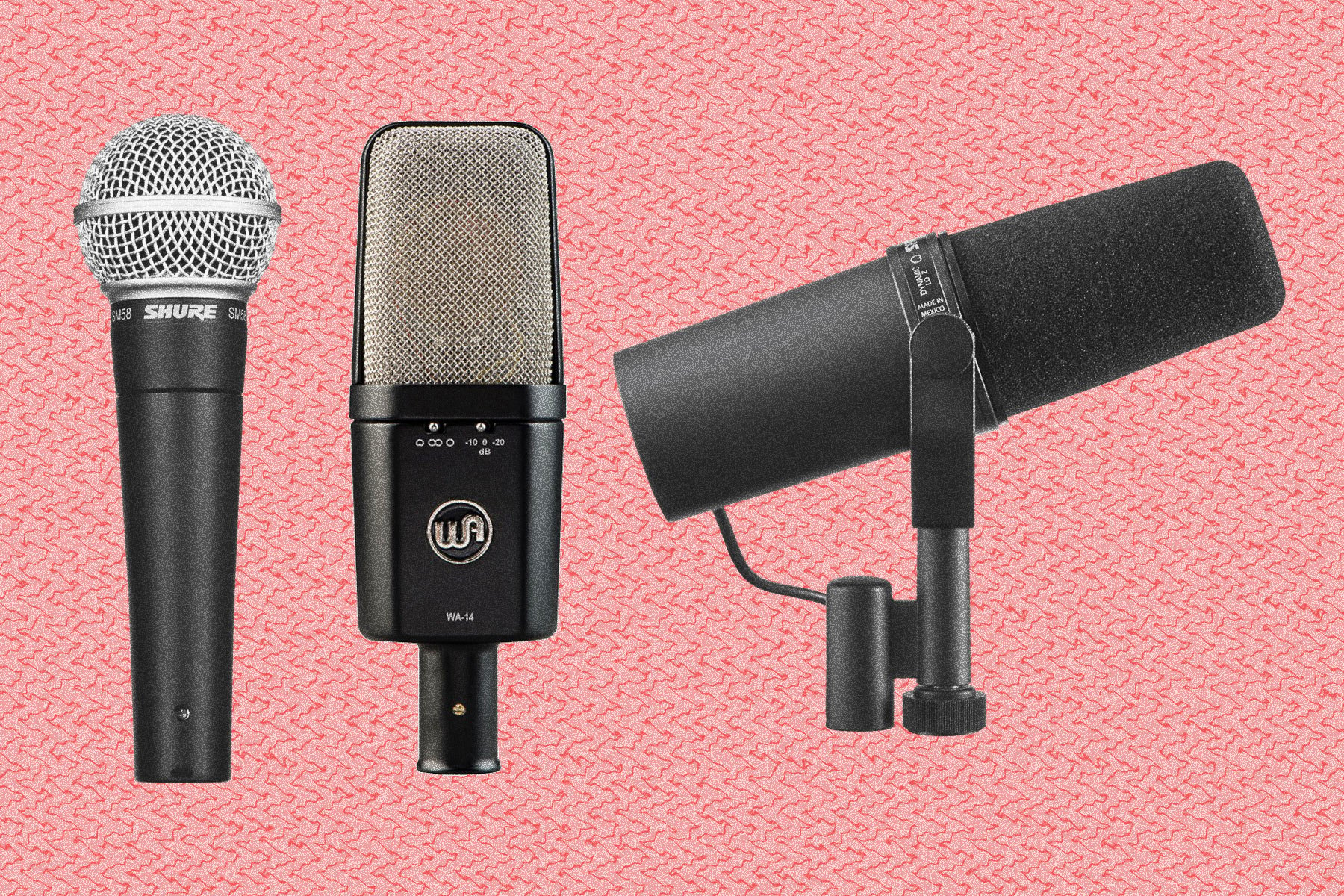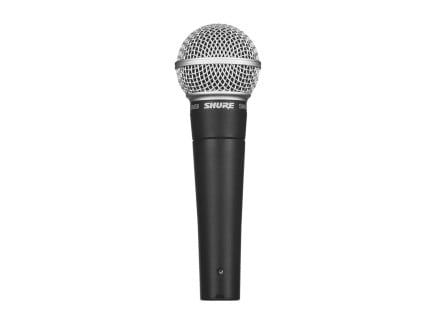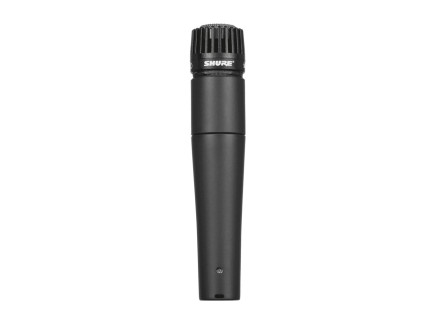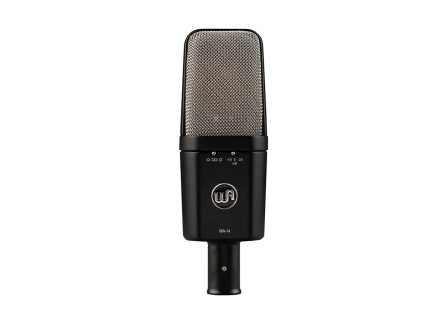When you’re shopping for your first microphone the sheer amount of options can be overwhelming, especially if you’re new to the audio world. And the terminology? Talk about confusing—polar patterns, diaphragms, condenser, dynamic, front address, side address, phantom power? What does this all mean, and how do you sift through the ocean of information to narrow down the best choices for what you need?
In this article, we’ll dive into some of the different types of microphones, the specifications and what they mean, and how to determine which is the right fit for your specific needs when you’re building out your microphone locker.
Different Types of Microphones
Let’s start with running down the three primary categories of microphones, based on their operating principle—that is, the way that they convert sound into electrical signals. These aren’t the only types of microphones, but they’re the three most commonly used for recording and live music production.
Condenser Microphones
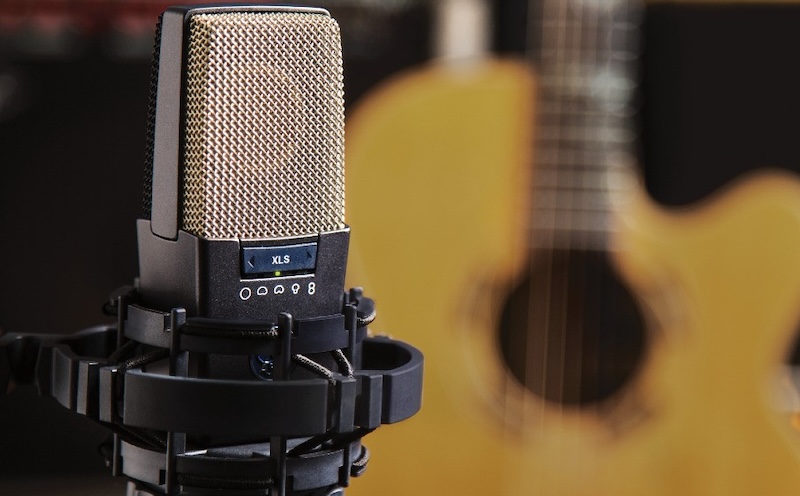
Condenser microphones are most commonly used in the recording studio. Due to their high sensitivity levels you don’t see them used for live/stage work very much, but that’s changing. Due to their cost and fragility they’re not normally used in small clubs, but professional sound reinforcement techs use them for everything from lead vocals to drum overheads.
Compared to dynamic microphones, condenser mics are more delicate and have a sensitivity to sound pressure levels (SPLs) above a certain threshold. But the clarity and articulation they provide can't be matched. Due to the nature of the "condenser" operating principle, these mics need +48V phantom power to work—which in most cases can be provided directly from your mixer, audio interface, or field recorder.
Dynamic Microphones

Dynamic microphones work differently than condensers, and they provide a different type of sound. They don't require phantom power and can withstand high sound pressure levels, which is why you see them used all the time on drums, guitar cabinets, and other particularly loud sources. They're also commonly used in live/stage applications due to their relative insensitivity—this makes them good for isolating specific sound sources and reducing the risk of feedback from on-stage monitors, etc.
When you think of a handheld dynamic microphone, the Shure SM58 is more than likely the first one that comes to mind. It’s so iconic that the mere physical shape of it is now nearly synonymous with the dynamic mic category.
Dynamic mics are much less fragile than condensers, but generally speaking, they don't pick up quite as much as detail.
Ribbon Microphones
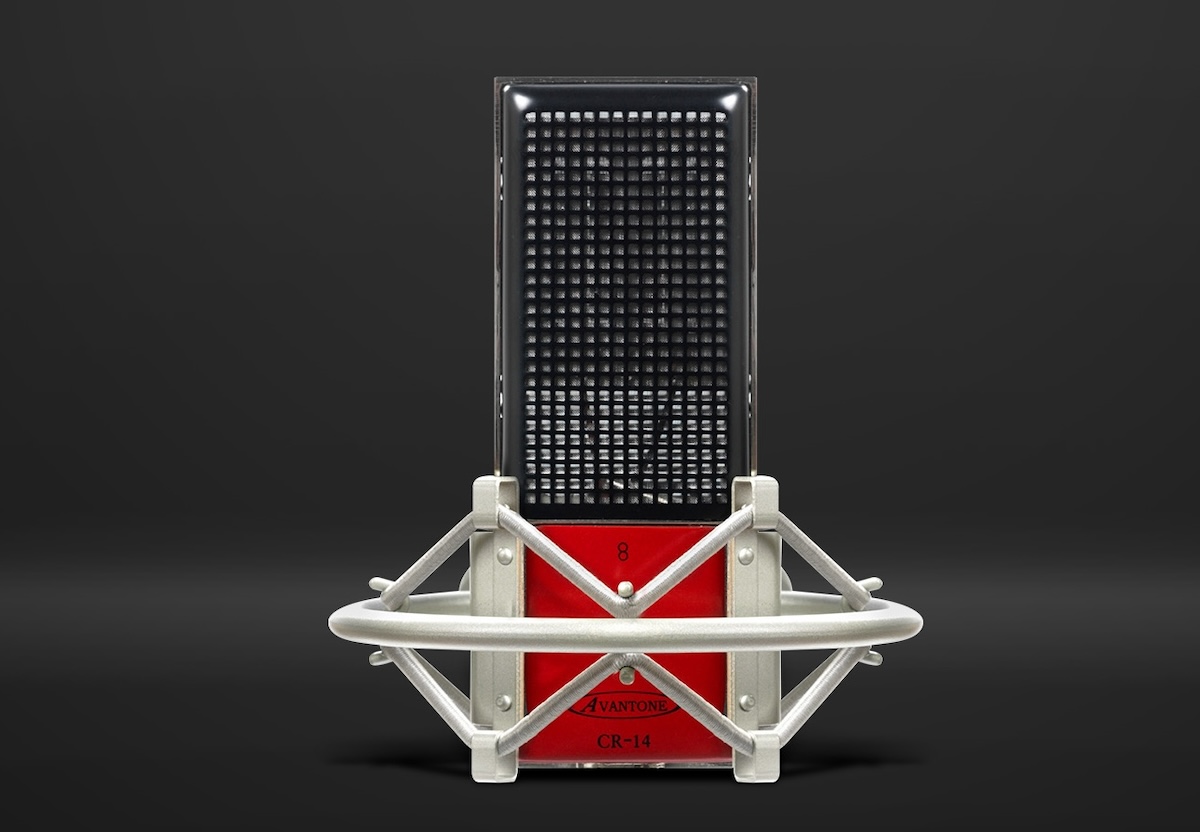
[Above: the Avantone CR-14, a budget-friendly ribbon microphone.]
As a subcategory to dynamics, ribbon microphones were very popular in the early days of recording. They fell out of popularity for a while due to how fragile the internal ribbon element was—and by extension, how expensive they were to maintain.
But ribbon microphones have seen a resurgence in recent years, and modern models don't have the same problematic fragility of the older ones. But they have every bit of the timeless sound they produce: compared to dynamic or condenser microphones, ribbon mics sound warm and dark…making them a great choice for brass, vintage-style vocals, and much more.
Since ribbon mics (usually) only offer a figure-8 polar pattern, they do a good job of picking up the sound of the room in addition to the source capture. This makes them great on guitar amps, vocals, brass, wind, and reed instruments.
[Ed.: for more about microphone operating principles, scope out our article Microphone Types Explained.]
Polar Patterns Explained
This is one of the most important specs when it comes to microphones. Polar pattern refers to how the microphone picks up and "hears" the sound. Each one is unique and useful for different scenarios. Some microphones only offer one polar pattern, some offer a few, and some even offer all of them!
Let's go over each one, how they're useful, and what situations suit them best.
Cardioid
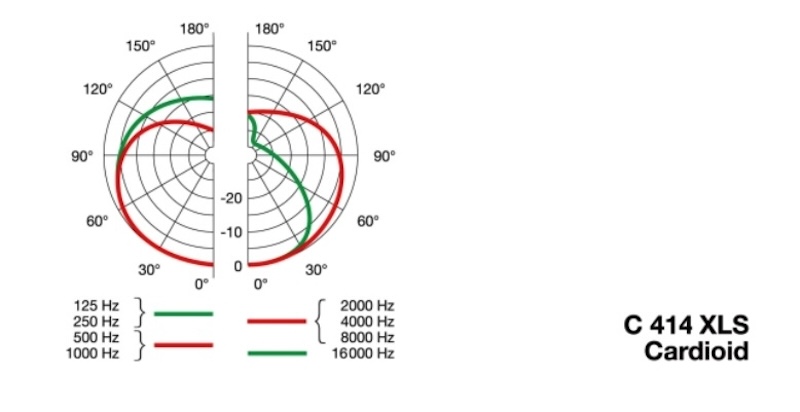
[Above: Cardioid response chart from documentation for the AKG C414 XLII.]
Cardioid is the most common polar pattern, and for the most part every microphone offers this unidirectional operation regardless if it's a dynamic or condenser design. When you look at a microphone spec sheet, the pickup area resembles a heart, which is how it got the name.
Off-axis rejection is one of the things that makes this polar pattern appealing. And despite providing a narrow pickup area, it’s by far one of the most useful patterns by providing a good amount of off-axis rejection.
Supercardioid
Supercardioid offers a tighter pickup than cardioid, but it offers more sound rejection from the sides. It does have less rear-axis rejection so it’s more sensitive from that angle. It’s good at not picking up room noise and bleed from other instruments, but the source needs to be more consistently focused in front of the capsule.
Hypercardioid
Another offshoot of cardioid, this polar pattern has some qualities of figure-8 due to increased rear-axis sensitivity. Hypercardioid offers great rejection from the sides and is good at preventing feedback all around.
This pattern is very directional, so how it’s oriented with the source is critical. It’s great at not picking up noise from the environment as well.
Figure-8

[Above: Figure-8 response chart from documentation for the AKG C414 XLII.]
Also known as bi-directional, this pattern has equal sensitivity from the front and rear while the sides provide the off-axis rejection. The narrow pickup angle is great at cutting bleed from other sources—if there’s nothing to the rear.
It’s one of the more unusual polar patterns, but you can pull off some cool techniques with it—like recording two vocalists at the same time, with one on either side of the diaphragm, or recording two amplifiers simultaneously to the same track. This polar pattern is the crux of several interesting stereo recording techniques as well…but, more on that another time.
Omnidirectional (Omni)
Omnidirectional polar patterns do just what their name implies: they pick up sound equally from all directions. An omnidirectional microphone has the same output and sensitivity no matter how it’s oriented relative to the sound source. Due to this, it also doesn’t experience the proximity effect and usually has the flattest frequency response.
It has some interesting applications, like recording group vocals with the vocalists standing around the mic instead of in front of it, because there technically is no “front.” Omnidirectional microphones are also important for several recording techniques aimed at capturing specific types of spatial image. This polar pattern is also useful beyond music production applications, like in broadcast and corporate events.
[Ed.: For more specifics about microphone polar patterns and their strengths and weaknesses, see our article, Microphone Polar Patterns Explained.]
Microphone Specifications to Look Out For
Specs are a big part when it comes to choosing the best microphone for your needs. Knowing what to look for can be confusing, especially for beginners. Let’s go over some of the definitions and what they mean.
Design
When it comes to design there are two things to consider: type of microphone model and the address.
The type of microphone indicates whether it's a dynamic, condenser, ribbon, etc. Address refers to the orientation of the capsule for source capture. Depending on the polar pattern, microphones are usually front or side address.
Frequency Response
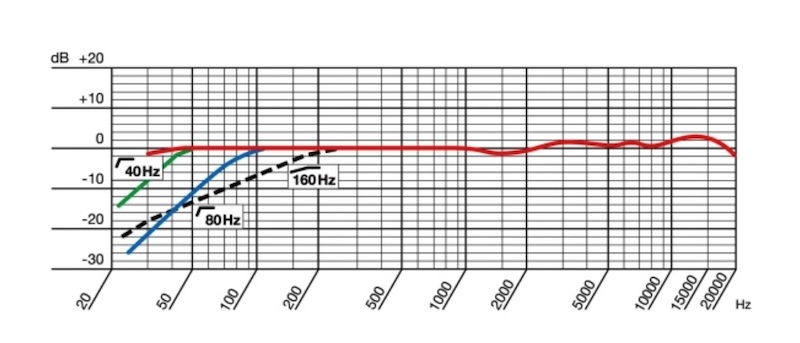
[Above: frequency response chart from documentation for the AKG C414 XLII.]
Frequency response is one of the biggest factors in determining which mic to buy. When you’re shopping around, you need to consider how you’re going to use it. A lot of microphone models offer specific frequency boosts and dips. This is part of what gives each microphone a distinct character, and it can also affect mixing decisions down the line, like equalization.
If you’re recording vocals, you want a microphone with a good midrange that complements that, so a model that’s tailored for low end sources, for instance, wouldn’t be a good choice.
It’s important to take a look at the frequency spec sheets when you’re doing buying research so you're not surprised when you throw it into action.
Polar Patterns
As we went over, there are multiple types of polar patterns. Each has their own benefits and drawbacks, but they all serve a distinct purpose in the sound capture process. There really is no “best” polar pattern. It all depends on the source you're capturing and the environment you’re capturing it in.
Pads and High-pass Filters
Many condenser mics not only come with switchable polar patterns, but also variable pads to accommodate high SPL sources and high-pass filters for attenuating low end. Pads keep the signal from clipping and high-pass filters cut out low end rumble so you get a cleaner source capture.
Dynamic mics don’t usually offer these options, but there are workarounds. You can use an inline pad that sits between the microphone output and the input of the preamp, and manypreamps offer pad switches and high-pass filters. You also might find these settings on the preamps in your mixer or audio interface.
Capsules
Another element that affects condenser mics is the type of capsule they use. This build element is a big factor in how they sound. The capsule also factors into the type of polar patterns that are available.
Quality of manufacturing is also important. Germany is regarded as making some of the best condenser microphone capsules in the world, but just because a mic might utilize a less expensive capsule from a country of manufacture like China doesn’t necessarily mean it won’t sound good.
Picking the Right Microphone for Recording
Now that we’ve gone over the different types of microphones and the specifications that give them their mojo, let’s go over some common recording scenarios to help narrow down which type of mic might be the best fit for each.
It’s not always possible to try out a microphone before buying, but there are a great amount of resources on the internet that can help you do in-depth research to make sure you’re buying the best one for you.
Vocals
Vocals are a source that applies to almost every style of music. For studio work, 99% of the time the go-to type of mic is a condenser. This is due to the nuance and detail the build provides.
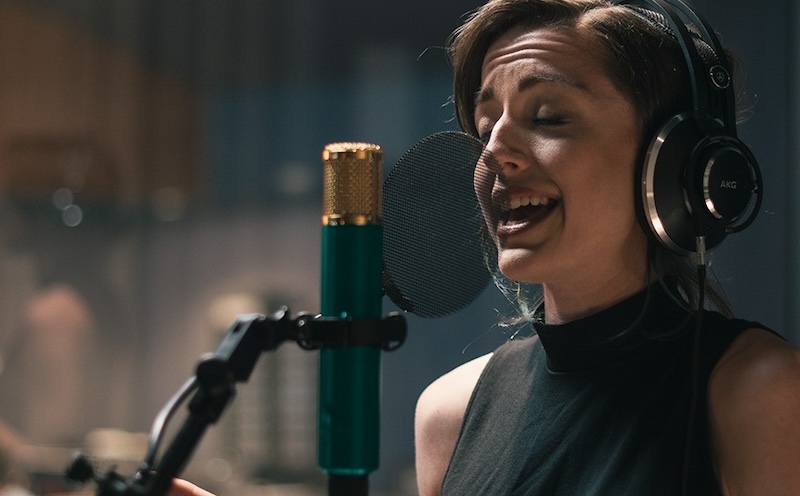
Each vocalist has a different timbre, tonality, and delivery. This makes the microphone you pair them with even more important to the quality of the end product. There's a lot you can do to manipulate vocal takes in mixing and post production, but "fix it in the mix" is never the right mindset. You want to get it as close to finished in the beginning.
If you're doing pop, rock, or country vocals you want to retain as much of the vocalist's character as possible, the AKG C214, Austrian Audio OC16, or Audio Technica AT2035 are great for this, for example.
But if you’re tracking more aggressive vocal styles for genres like heavy metal and hip-hop, the sensitivity of a condenser might not be the best choice. A dynamic like the Electro-Voice RE20 or Shure SM7B might bring the best results.
Electric Guitar
For the most part, electric is a pretty easy instrument to record. Beyond the talent of the player and the quality of tone, it’s really about getting the mic placement on the amp right. If you’re close-miking, the room is pretty much a non-factor.
There are a lot of tones you can get depending on how you orient the microphone to the speaker cone. Since guitar amps pump out a lot of SPL and the diaphragms of the microphones picking them up are only a maximum of a few inches away, dynamic models work best.
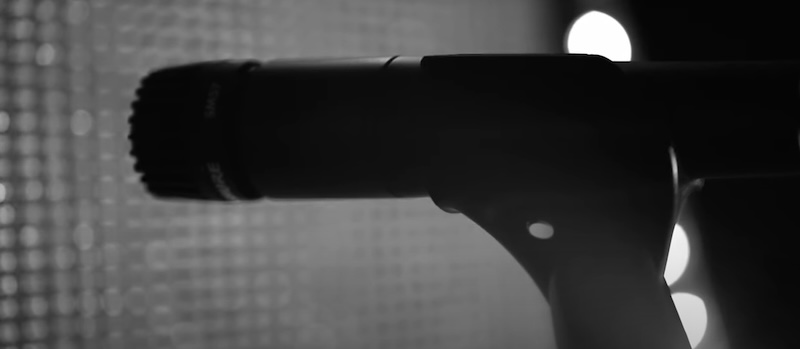
When it comes to tracking electric guitar, the Shure SM57 has been the go-to for decades. Guitar is a midrange instrument, and the frequency curve of the 57 is an ideal complement. But there are plenty of great alternatives, like the Blue Microphones enCore 100i, Sennheiser e609, or AKG D5.
Depending on the style of guitar you’re recording, a condenser can actually be a better choice than a dynamic. If the track calls for a cleaner sound that doesn’t have a lot of clipping, you want to retain the transients and dynamics of the signal. The Audio-Technica AT4033 or the Shure KSM32 are perfect for this.
Ribbon microphones were a top choice to capture some of the best recorded electric guitar sounds in history. They have a low end presence without being boomy, and the warm midrange is a perfect fit for the instrument. They’re certainly pricier, but the Cloud Microphones JRS-34-P or Golden Age Project R1A bring these timeless tones into the modern age.
Acoustic Guitar
Like all acoustic instruments, acoustic guitar comes with its own particular considerations when you’re miking it.
Due to the transient nature of the instrument, it's ideal to use a small diaphragm condenser microphone. They provide great dynamic detail and do well at picking up the broad range of frequencies an acoustic guitar produces.
One of our favorite small-diaphragm condenser mics is Warm Audio's WA-84, a spinoff of classic Neumann designs at a quite approachable price.
Drums
Of all the instruments, drums can be one of the most difficult to record properly. They’re loud, dynamic, and the kit pieces range all over the frequency spectrum. This makes them virtually impossible to record with just one microphone. So let’s break it down a little bit.
For overheads engineers opt for condensers, usually a small-diaphragm model to capture the fast transients of the cymbals. But overheads are intended to paint an overall picture of the kit, picking up the snare and toms as well.
If you have a healthy budget, the AKG C414 XLII is one of the best all-around microphones on the market. You can use it on any source and it just sounds amazing. But if you don’t have that much to spend, the Neumann KM 184 and budget-conscious the AKG C1000S are terrific choices. Again, a pair of Warm WA-84s could be a great choice, as well.
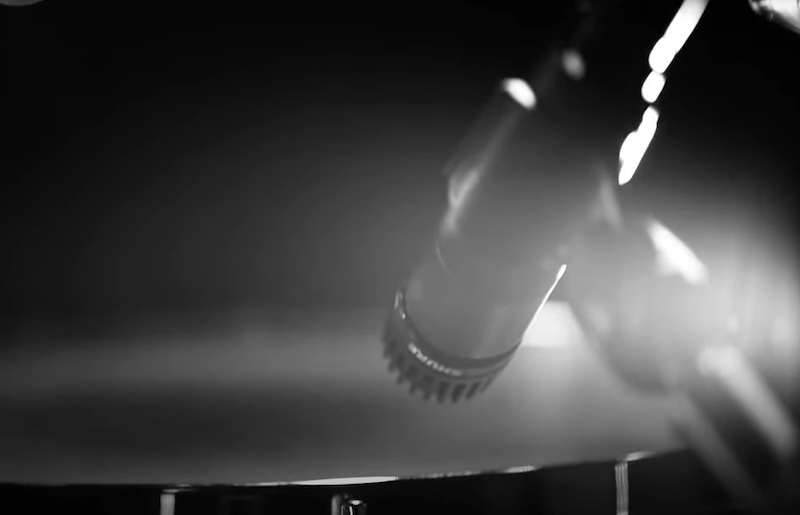
Snare is one of the most important drum kit elements. You’ll usually find a dynamic mic pointed at the batter (top) head, and sometimes another on the resonant (bottom) head to better pick up the sound of the snares. The same goes for toms, but generally only the top heads are mic’d.
For the kick drum you want to choose a mic specifically designed to capture the low end detail that a lot of mics roll off. The AKG D112 or Shure Beta 52A are perfect for it.
Wind, Reed, Brass, and String Instruments
These disparate types of instruments might seem to be night and day, but the concept behind capturing them accurately is similar. You can use a dynamic mic in a pinch, but to really put their essence onto a recording a large diaphragm condenser or ribbon mic is the best choice.
Just keep in mind that some of these instruments might produce a high SPL, so you'll more than likely need to use a pad somewhere in the signal chain to prevent clipping or the risk of equipment damage.
Creating Your Own Samples
Sure, you can buy into one of the many amazing sample libraries that are available. But where's the fun in that?
Creating your own samples is something that engineers and producers do all the time and there are a lot of benefits to the practice. But with such a wide spectrum of possibilities how do you narrow it down to just one microphone? The reality is you can't, so it's best to opt for a versatile model that covers a lot of bases.
A tried-and-true workhorse like the AKG C414 is perfect in this scenario—it's truly one of the most flexible and great-sounding microphones on the market altogether. It covers so many bases and offers a lot of tonal versatility that allows for a lot of sonic manipulation down the line.
Of course, if you don't have the budget for a C414, there are alternatives: Warm Audio's WA-14, for instance, is a more budget-friendly recreation of similar 1970s AKG designs.
Conclusion
When you’re first getting your microphone locker together it can be understandably overwhelming. This is especially true if you’re only looking to invest in one microphone.
Considering the primary sources you’ll be recording is the best way to narrow down the field of options. It might seem daunting, but keep in mind you'll be adding to your microphone collection progressively.
With a little research and work to identify what you really need out of your first microphone you'll be in a prime position to find the best model to fit your immediate needs and budget.
Brandon Stoner is a lifelong musician and audio engineer who owns more guitars than anyone needs. As a lover of all things writing and music technology, he crafts every piece with his dog Max on his lap.
Portfolio | LinkedIn | Twitter

